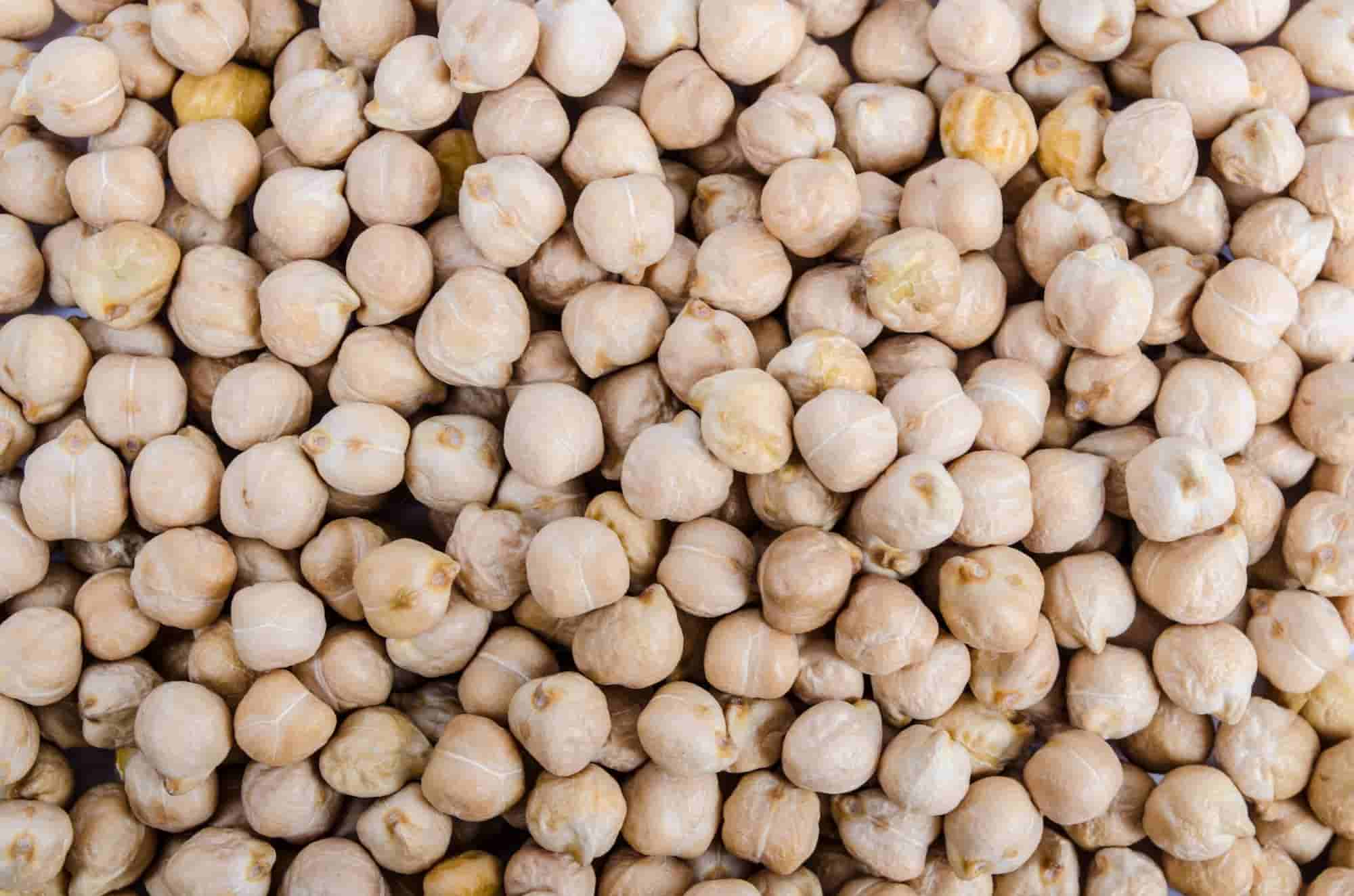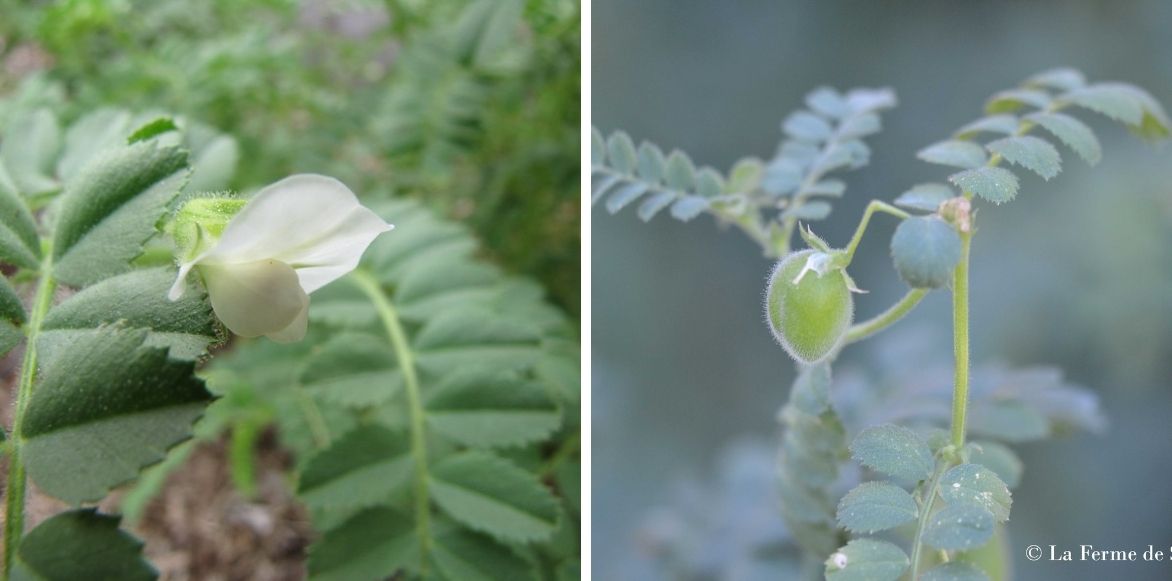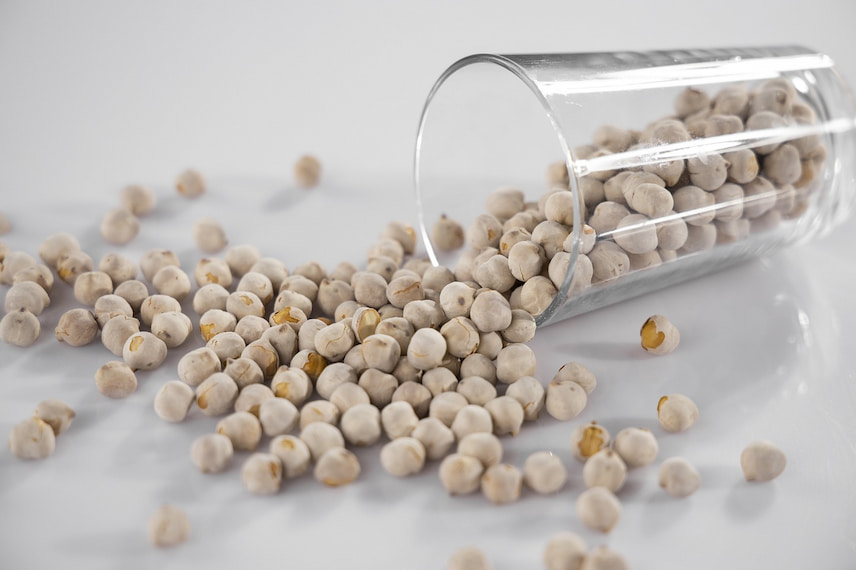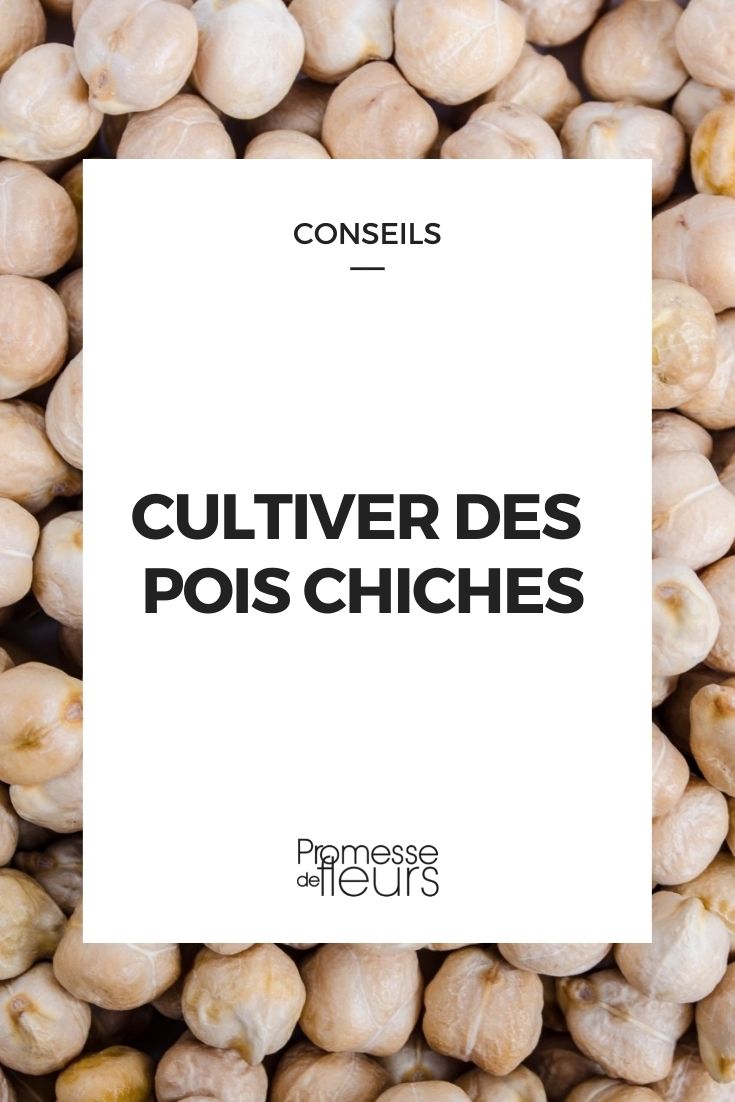
And what if you grew chickpeas?
All our tips for sowing, maintaining, and harvesting chickpeas
Contents
Falafel, hummus, Indian dahl, couscous, Provençal panisse… there are many dishes where chickpeas take centre stage, particularly in vegetarian cuisine. It must be said that this little seed has multiple culinary advantages: rich in plant proteins, it serves as an alternative to meat. But it is also interesting for its high content of digestible carbohydrates and fibre. Typical of Mediterranean cuisine, it is primarily produced in Australia, Turkey, and India. However, you can also grow chickpeas in our gardens, provided there is plenty of sunshine and well-drained soil. We will explain where, when, and how to sow chickpeas.
What exactly is chickpea?
Member of the legume family Fabaceae, the chickpea (Cicer arietinum) is a leguminous plant just like the pea or the broad bean. However, they do not belong to the same botanical genus. Domesticated around 5000 BC, it has spread throughout the Mediterranean basin due to its preference for warm climates.
An annual herbaceous plant reaching 50 to 60 cm in height, the chickpea has a bushy habit, dark green foliage, and a highly developed and taproot system that allows it to penetrate up to two metres deep. This enables it to withstand summer drought very well. In fact, it thrives in such climatic conditions! As for its flowering, it is white and of the papilionaceous type. Subsequently, fluffy and swollen pods form, containing only two bumpy seeds.

The chickpea from flower to pod
It is also a plant that has the ability to fix nitrogen from the air in its nodosities, small balls that form on its roots, and redistribute it. This is why it is widely cultivated in the south of France to improve sandy soils and subsequent crops.
There are essentially three types of chickpeas: the Kabuli type with light-coloured seeds, the most commonly grown in France; the Desi type with smaller, wrinkled, and slightly darker seeds; and the Gulabi type, which is less common. Several varieties exist, but the easiest to find remains the Pascia of Sicilian origin.
Where to grow chickpeas?
Low-maintenance, the chickpea does require sunlight. It is therefore ideal for vegetable gardens in the south of France, but it can also be grown further north as long as it is provided with perfectly drained soil. This is because it absolutely detests humidity and cold. It is not afraid of summer drought, which is even beneficial for it. Its developed root system allows it to seek out what it needs from deep within the soil.
 The chickpea needs sunlight and perfectly drained soil
The chickpea needs sunlight and perfectly drained soil
This is why the chickpea also requires loose, deep soil that warms up quickly. The ideal temperature for its development is around 15 °C, and its growth will be optimal in soil that reaches 20 °C.
As for the nature of the soil, it matters less to it. While it loves sandy, even stony soils, it can also thrive in richer but well-drained soil. In fact, it wouldn’t mind a compost addition in autumn. However, clayey soils are not recommended.
When to sow chickpeas?
Ideally, chickpeas are planted in spring, starting from the end of February in the south of France, and from April to the end of May elsewhere. The key is that the soil is sufficiently warmed. In vegetable gardens located further north in France, chickpeas can also be sown under a tunnel that will be removed later.
How to sow chickpeas?
To facilitate germination, you can soak chickpea seeds in water overnight.
Then, it’s time to sow:
- Loosen the soil with a cultivator and rake
- Dig furrows about 4 cm deep, spaced 40 cm apart. This depth of furrow makes future hilling and weeding easier.
- Sow either in clusters of 3 seeds every 20 cm or one seed every 10 cm.
- Cover the seeds with 3 cm of soil and lightly firm down with the back of the rake.
- Water using a watering can.
Remember to protect your young plants with a filament or set up a scarecrow, as pigeons love chickpea seeds.
Eight days after planting, the chickpea plants begin to emerge.
And what care should be given to chickpeas?
Chickpea seedlings should only be watered at the beginning of their development. After that, it is unnecessary. However, hoeing is essential until the plants are sufficiently large.
When the plants reach about twenty centimetres in height, good earthing up is necessary. This helps the plants to stand upright. This earthing up can be repeated once.
As for thinning, it is not needed.
When and how to harvest?
The harvest generally takes place at the end of August, when the pods are well dried and brown. The harvest is done all at once, in dry weather, by uprooting the plants. Be gentle to avoid bursting the pods.
Next, two options are available:
- either you shell the seeds by hand,
- or you hang your plants upside down in a ventilated room. This way, they will be perfectly dry for shelling. As shelling by hand can be somewhat tedious, you can also place your plants in a jute bag and beat them.

Since chickpeas are susceptible to the bruchid, an insect that lays its eggs in the pods, place your chickpea seeds in the freezer for 48 hours. This will eliminate any intruders. Afterwards, your chickpeas can be stored in an airtight jar away from light.
Some enemies to beware of
The chickpea secreting malic acid naturally protects itself against most pest insects. Only the bruchid and anthracnose can be fatal to it. The legume bruchid is a beetle that is only dangerous to future harvests. A spell in the freezer is sufficient. As for chickpea anthracnose, it is a fungal disease that spreads by wind. It is identified by the brown spots that appear on the pods, leaves, and stems. The only solution lies in uprooting and burning the affected plants. Afterwards, it is recommended to apply strict crop rotation.
- Subscribe!
- Contents
































Comments